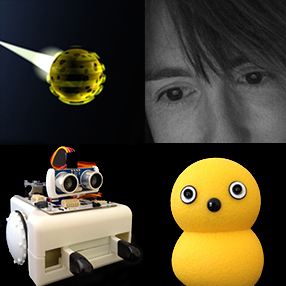No, I don’t mean that these are robots under development, I mean that I’m hoping to build my own Blubber Bot (or two) by around the time I finish my thesis next year.
Ok, the first thing to clarify is, no this will not stand in the way of my completion. However, maybe it does indicate that I’m more positive that I am going to complete, at last, in the first quarter of next year. I mean, I’m already planning the party, so it must be true, mustn’t it??!!
Anyway, I thought that I should construct some guests of honour for my robot themed party, hence my decision to track down at least one, or maybe two, Blubber Bot kits. The Blubber Bots are a “transitional species” of robot closely related to the ALAV (Autonomous Light Air Vessel).
I’m just hoping that my technical skills are going to be up to the task. They should be great guests, and a nice talking point as they “graze the landscape in search of light and cellphone signals”.
UPDATE: The purchase has been made, now I just hope that I’m capable of putting them together (and that is assuming that the kits arrive safely and with no damage)!


